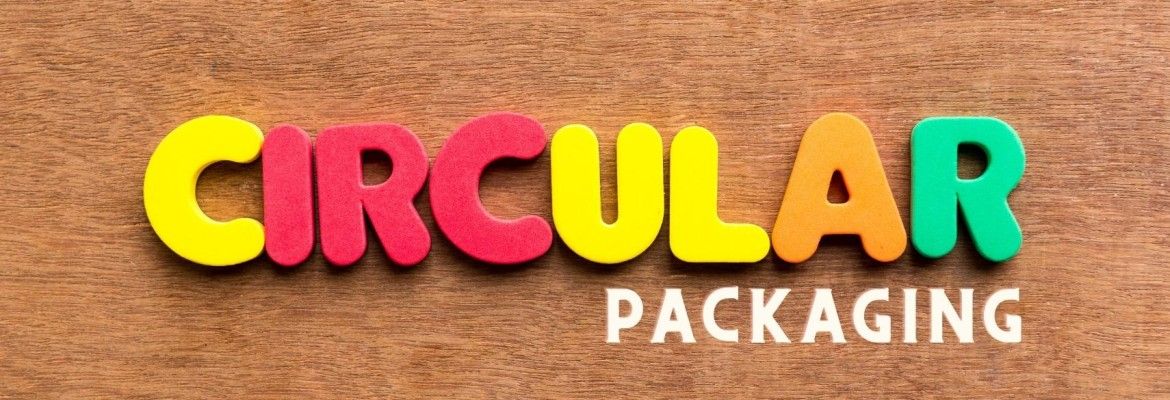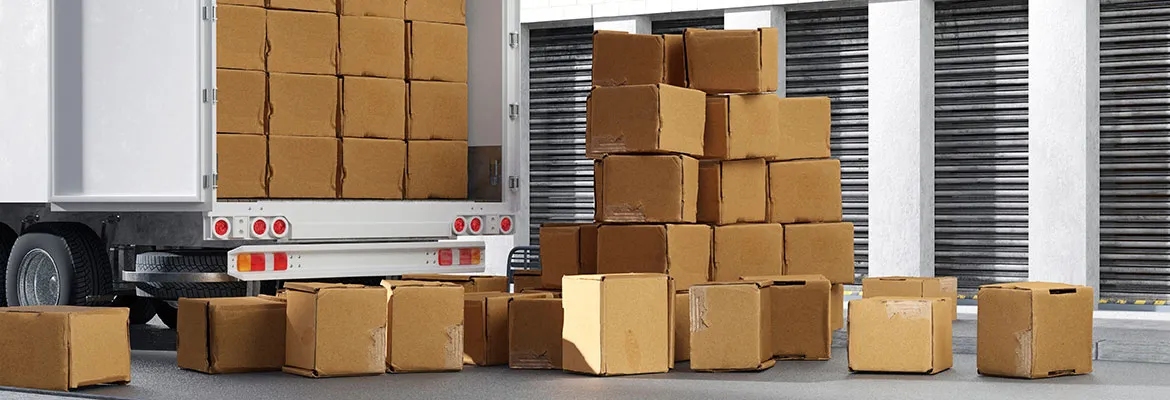
Circular packaging design guideline: The guide for recyclable packaging
- Stricter regulations, higher recycling targets, but still packaging waste remains a problem.
- The EU is setting high standards for the circular economy with new laws and directives - and thus strengthening the requirements for sustainable packaging.
- What does better recyclability mean and how can it be achieved? The Circular Packaging Design Guideline looks at the entire value chain to answer these questions.
- From general to material-specific recommendations for sustainable packaging design, the Guideline provides important information for manufacturers.
What are the requirements for packaging mitbringen, damit sie optimal wiederverwertet werden kann? to be optimally recyclable? What possibilities are there for manufacturers to combine appealing packaging design and excellent recyclability? The Circular Packaging Design Guideline of the University of Applied Sciences (FH) Campus Vienna shows which means can be used to efficiently close material and product cycles.
Politics puts pressure on: Better circular economy as legal framework
The EU is pursuing a major goal: moving away from a throwaway society and towards an improved circular economy. A corresponding package of requirements has already determined the guidelines for dealing with waste since 2018. The Single-Use Plastic Labelling Regulation is the latest legal measure to be added, along with quotas for the use of recycled materials.
Manufacturers are increasingly taking on the responsibility. For them, holistic ecological packaging design is becoming both a challenge and a necessity.
No positive development in recycling
Just over 174 kilogrammes, that's how much packaging waste was produced per capita in the current 27 Member States, according to the Statistical Office of the European Union (Eurostat). Germany is above average in this survey - at around 227.5 kilograms per capita quite significantly.

So while the volume of waste continues to be too high, the recycling rates are declining. On average, it was 81 per cent in 2018; with almost 97 per cent, Germany was also among the European leaders here. The problems surrounding waste generation and recycling therefore remain.
New laws for a new circular economy
That is why the EU is reacting with stricter regulations. On the one hand, they should help to avoid waste. On the other hand, they set higher quotas for recycling.
The EU Circular Economy Package made a start in this respect in 2018; quotas for the use of recyclates are to follow by 2022, and the Single-Use Plastics Directive is already in effect. The EU requirements have been incorporated into German legislation, for example in the new Packaging Act.
However, the legal framework conditions are only one aspect in the overall view that is relevant in the design of sustainable packaging. A team from the Department of Packaging and Resource Management (Department Applied Life Sciences) at the FH Campus Vienna has therefore looked at the entire value chain.
The aim of the research was - and is - to findsuitable solutions for improved recyclability of packagingThe Circular Packaging Design Guideline emerged from this research..jpg)
Sustainability for the entire value chain
The guideline focuses on a holistic approach so that packaging made of different materials can meet the requirements placed on it. This starts with the protective function for the packaged products and extends to the task of providing information for consumers.
Packagings: Multi-talents with a demanding requirement profile
While it is precisely this protective functionsustainability in consumption possible in the first place, because products do not become unusable or inedible prematurely, packaging itself is considered a problem case when it comes to this issue. The figures on recycling and waste generation as well as the constant efforts for stricter regulatory frameworks naturally support this view.
frameworks naturally support this view. This means even more challenges for the packaging. The Circular Packaging Design Guideline, therefore, formulates the requirements profile in this way:
"Sustainable packaging offers maximum functionality with the best possible product protection, causes minimal ecological impact and is as circular as possible."
In order for them to return to the material cycle as high-quality secondary raw materials after use, the conditions must be right - along the entire value chain.
Sustainable design - with principal
Not only the legal requirements but also the demands of the market determine whether packaging is really suitable for the circular economy. The required recyclability, therefore, has several facets, which the authors of the guideline set out in the four defining design principles:
Principle 1: Effectiveness
characteristics of packaging fall under this point:
- the protective function for the product against external environmental factors or mechanical effects, and
- the best possible handling for consumers
Principle 2: Efficiency
In short, this refers to the life cycle assessment of a package. How many resources were used in production? How many emissions were produced in the process? How does the balance turn out over the entire life cycle, from raw material extraction to recycling?
Principle 3: Health and safety
Packaging should not pose a health or safety risk to people or the environment. This is a wide-ranging issue that includes food contact requirements as well as anti-counterfeiting and environmental protection. The respective legal regulations are decisive.
Principle 4: Circularity
The so-called "circular design" of packaging can pursue various goals:
- the longest possible service life,
- "Closed-Loop-Recycling" ( this means that the recycled materials have the same properties as virgin materials produced for the same purpose), i.e. (multiple) reuse as secondary raw materials, as well as
- the use of renewable materials.
The second option, the recycling of packaging materials as recyclates, corresponds to the idea of the circular economy in the narrower sense.
In order to improve the design in this respect, two approaches are decisive: "Design for Recycling" and "Design from Recycling".
.jpeg)
Design for Recycling – Design from Recycling
What should packaging be like in order to be efficiently collected and recovered in the recycling process? What conditions must be met to ensure that the recycling process produces raw materials that can be processed further?
These are the central questions around which "Circular Design" revolves. The guideline highlights two sub-areas that are decisive for packaging design.
Design for Recycling: For better recyclability
An important prerequisite for ensuring that less waste has to be landfilled and, conversely, that more recycled materials are returned to the material cycle is:a packaging design that takes the various stages of recycling into account from the very beginning.This includes several aspects:The sorting ability
It is the basic prerequisite for packaging to be recycled at all. This means that the materials used can be correctly
- detected and identified by the available technologies for sorting, for example through the use of near-infrared, and
- be separated from other packaging materials. Compressed air is used for this purpose, for example.
The recyclability
Recyclable packaging must also fulfil a number of other criteria:
- The respective collection systems of the countries and regions can record the materials used.
- The available technologies can sort the packaging into defined material streams.
- The packaging can be recycled through the existing recycling processes.
- The secondary raw materials obtained are of sufficiently good quality to have a realistic market chance and to be able to replace virgin materials in production.
.jpg)
Design from recycling: Back into the material cycle
The second sub-area of "Circular Design" starts with this last point of recyclability and deals with the question: What happens to the materials after they have gone through the recycling processes - and what prerequisites should the packaging have in order to be considered for such reuse in the first place?
For plastic packaging for example, the relevant criteria according to the Guideline are as followed:
- As far as possible, materials are used that are widely available. This includes PET, for example.
- Additives and/or additives should be used in the smallest possible quantities. This applies in the same way to paints. Here, the Guideline recommends that these should be glazed.
- Small parts that can be detached by consumers should be avoided.
- If a package consists of several components, these should be easy to separate during the sorting and recycling process.
- Sortability and recyclability should also be taken into account for packaging aids (closures, sleeves, labels or others); it is best to match the materials for this with that of the packaging material.
These recommendations for the design of plastic packaging are, for now, very general. This is mainly due to the fact that there are a large number of different materials in this area, each with specific properties. Accordingly, their suitability for the closed material cycle also varies greatly..jpg)
That is why the Circular Packaging Design Guideline lists comprehensive assessments and recommendations for the individual packaging materials: for plastics, composite materials, paper, cardboard, glass, tinplate and aluminium. The general and material-specific design recommendations, together with overviews of ountry-specific constitutional structures and legal foundations provide comprehensive guidance for the industry.
Cooperation with industry representatives and other organisations that deal with the topic of "Circular Design" also helps. Another advantage is that the Circular Packaging Design Guideline is constantly being updated in order to respond to new regulations or new technical possibilities.
Manufacturers from Germany, Austria, the Netherlands and countries with similar structures in their waste management will therefore find important impulses for a truly closed-loop recycling economy in the Guideline.
These articles might also interest you:

Shipping costs - the big provider comparison
Sending a parcel within Germany or to another country can entail completely different postage costs.
The amount of postage depends not only on the size or weight of the parcel.

The new Packaging Act
The new law replaces the previously applicable Packaging Ordinance. It provides for numerous new obligations for initial distributors of packaging filled with goods that typically accumulates as waste at the end consumer's premises.

Customised shipping boxes - The answer to rising shipping costs
The savings effect is achieved at labelprint24 by minimising the material required for the shipping box without neglecting the protective function of the packaging.




